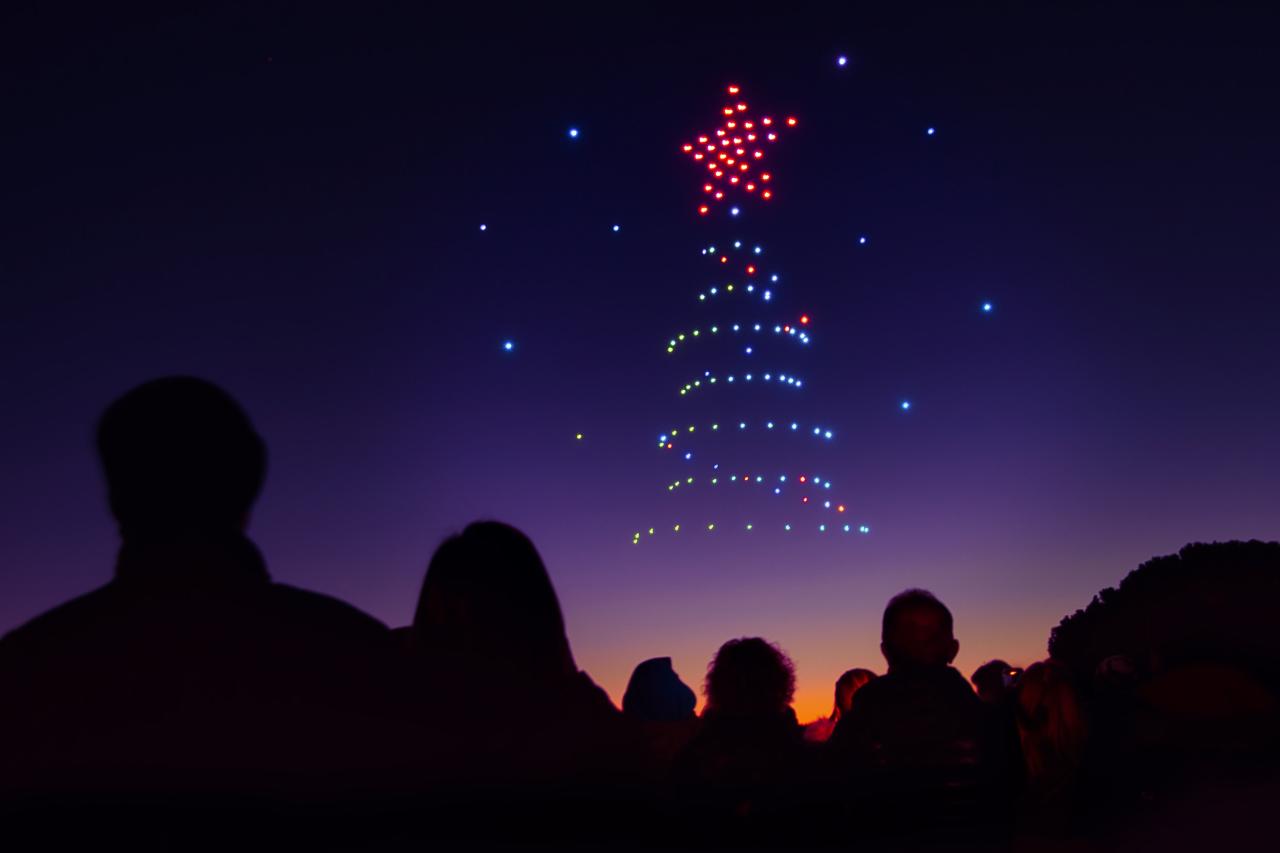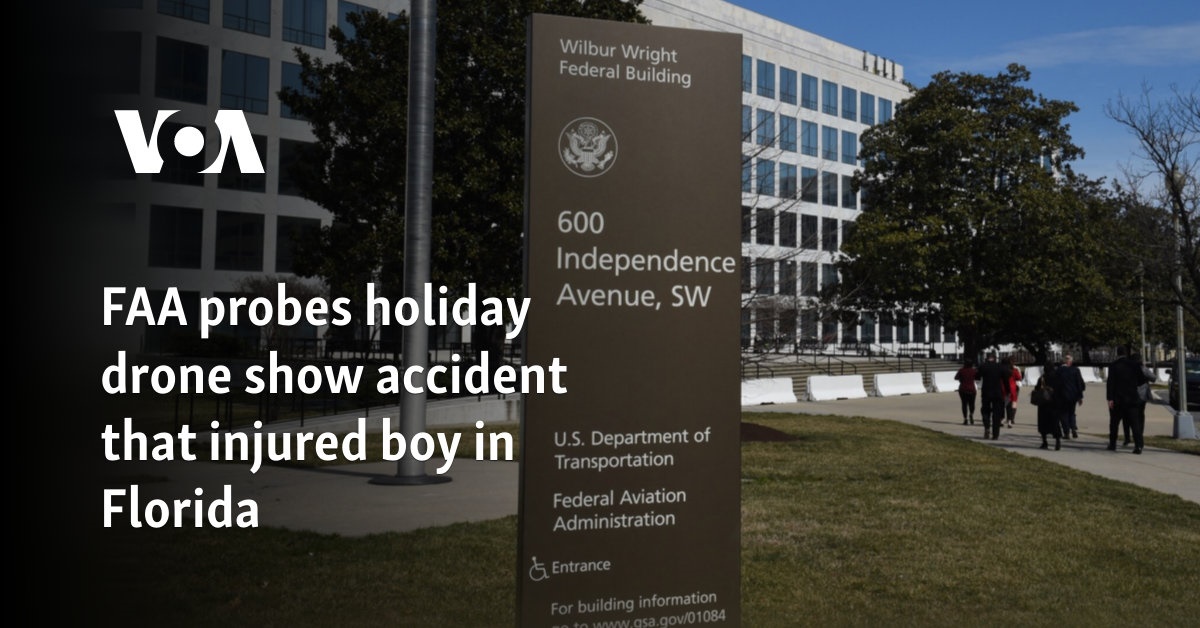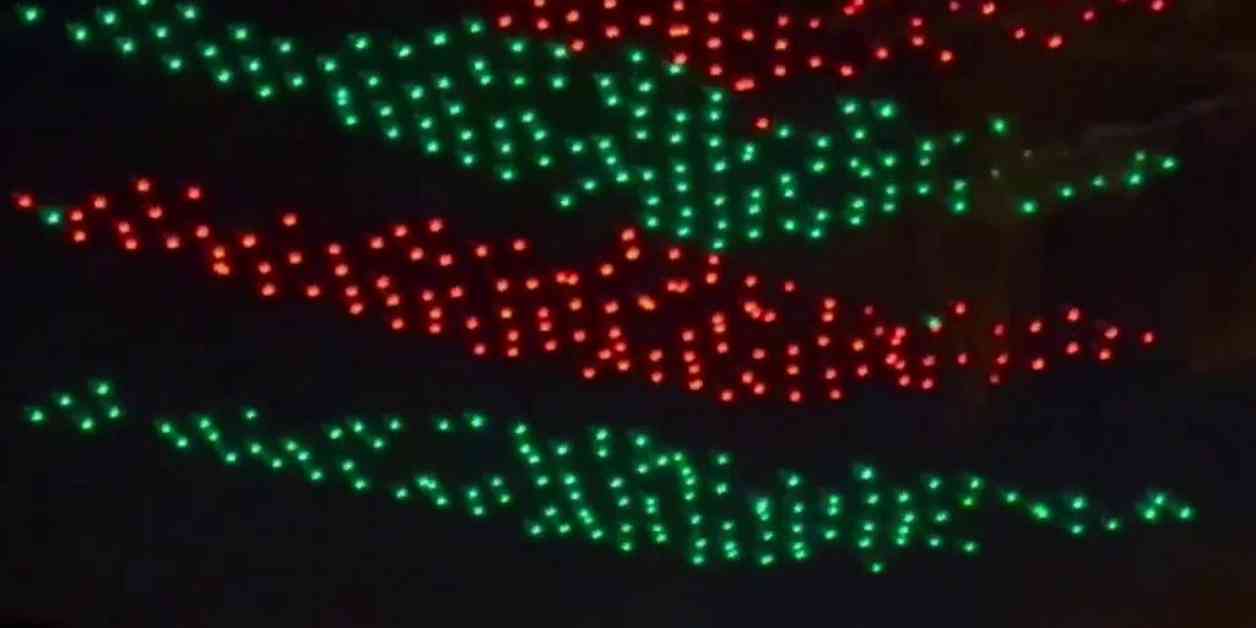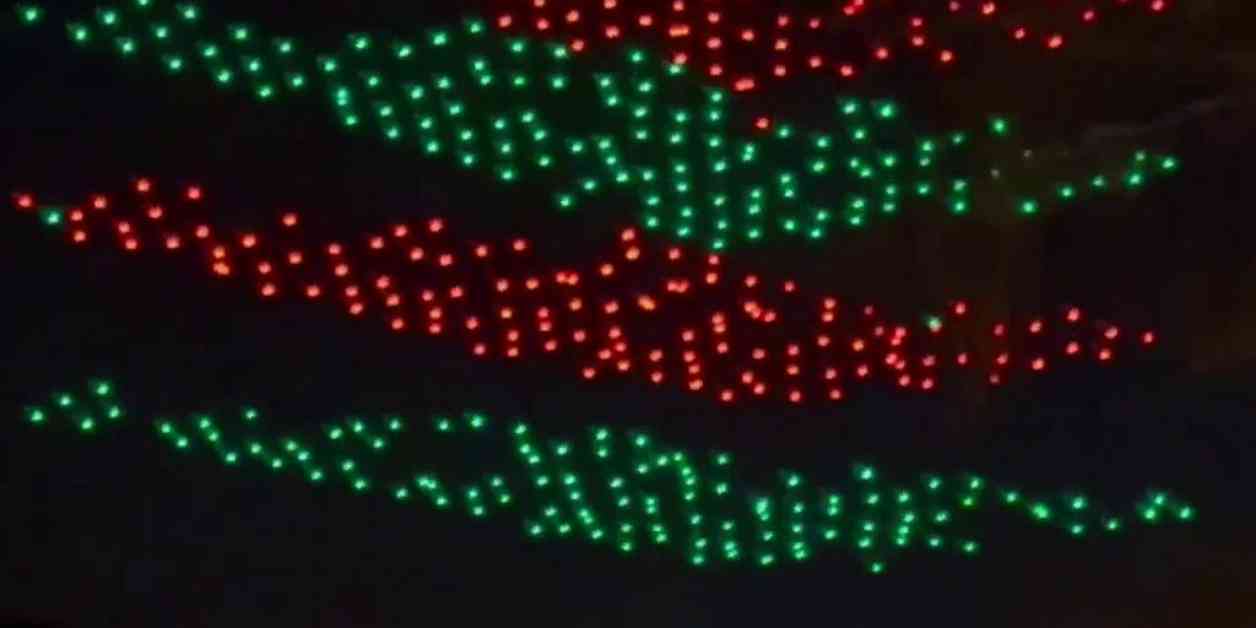Drone show accidents, while relatively infrequent, highlight the inherent risks associated with large-scale drone operations. This analysis delves into the various facets of these incidents, exploring the contributing factors, safety protocols, legal ramifications, and technological advancements aimed at mitigating future occurrences. We will examine specific case studies to illustrate the real-world consequences and learn valuable lessons for improving safety standards.
From mechanical failures and software glitches to operator error and unforeseen environmental conditions, the potential for accidents is undeniable. Understanding these risks is crucial for ensuring the responsible and safe implementation of drone shows, balancing the spectacular visual displays with the need for robust safety measures.
Drone Show Accidents: A Comprehensive Analysis

Drone shows, while visually stunning spectacles, carry inherent risks. Understanding these risks, implementing robust safety measures, and learning from past incidents are crucial for ensuring the continued enjoyment and safety of these increasingly popular displays. This analysis delves into the various aspects of drone show accidents, exploring their causes, consequences, and potential mitigation strategies.
Recent drone show accidents highlight the potential dangers of unmanned aerial vehicles, even in controlled environments. The precision required for such displays is starkly contrasted by the often chaotic reality of conflict, as seen in the recent ukraine drone attack on russia , where the use of drones for military purposes presents entirely different safety and logistical challenges.
Understanding these differences is crucial for improving safety protocols in both civilian and military drone operations.
Types of Drone Show Accidents
Drone show accidents can be broadly categorized into malfunctions, collisions, and uncontrolled crashes. These events can stem from a variety of factors, impacting both the drones themselves and the surrounding environment.
| Type of Accident | Description | Contributing Factors | Prevention Strategies |
|---|---|---|---|
| Malfunctions | Failures in drone components, including motors, propellers, batteries, or flight controllers. | Mechanical defects, software glitches, inadequate maintenance, poor-quality components. | Rigorous pre-flight checks, regular maintenance, use of high-quality components, redundant systems. |
| Collisions | Crashes resulting from drones colliding with each other, obstacles, or other objects. | Poor flight planning, inadequate spacing between drones, loss of control, environmental factors (wind). | Advanced flight planning software, precise GPS coordination, obstacle avoidance systems, sufficient airspace. |
| Uncontrolled Crashes | Sudden and unexpected loss of control, leading to a crash. | Communication failures, GPS signal loss, operator error, extreme weather conditions. | Redundant communication systems, robust GPS signal reception, thorough operator training, weather monitoring. |
Drone failures can be categorized into mechanical, software, and communication failures. Mechanical failures involve physical damage or wear and tear to drone components. Software failures result from bugs or errors in the drone’s firmware or flight control system. Communication failures disrupt the link between the operator and the drone, leading to loss of control. A typical flowchart would start with the operator initiating the show, progressing through pre-flight checks, flight execution, and potential points of failure like incorrect settings, misjudged distances, or inadequate response to unforeseen events. Each decision point in the flowchart would lead to either successful execution or an accident scenario, highlighting the critical role of operator skill and preparedness.
Safety Regulations and Protocols, Drone show accident

Safety regulations for drone shows vary significantly across countries.
- Country A: Strict licensing requirements for operators, mandatory pre-flight inspections, limitations on flight altitudes and locations.
- Country B: Focus on airspace management, requiring detailed flight plans and approvals for large-scale shows, emphasis on operator training and certification.
- Country C: A more lenient regulatory framework, with less stringent requirements for smaller shows, but stricter penalties for accidents involving injuries or property damage.
Standard operating procedures for a professional drone show include comprehensive pre-flight checks of all drones and equipment, meticulous flight planning with detailed drone trajectories and timings, and well-defined emergency protocols for handling unforeseen events, including communication loss and malfunctioning drones. A pre-flight checklist would cover battery levels, motor function, GPS signal strength, software updates, and emergency procedures.
Impact and Consequences of Accidents
Drone show accidents can have significant environmental consequences, such as damage to property (buildings, vehicles), injury to wildlife (birds, other animals), and potential pollution from battery acid or drone debris. Legal ramifications include fines, lawsuits from injured parties or property owners, and potential criminal charges if negligence or recklessness is proven. Economically, accidents can lead to substantial repair costs, legal fees, insurance claims, and significant reputational damage for the operators and event organizers.
Technological Advancements and Mitigation Strategies
GPS and other navigational systems are crucial for preventing accidents. Redundancy systems, such as backup batteries and communication channels, provide fail-safes in case of primary system failures. AI and machine learning play an increasing role in enhancing safety. Three applications include:
- Autonomous obstacle avoidance: AI algorithms can analyze real-time sensor data to identify and avoid obstacles autonomously.
- Predictive maintenance: Machine learning models can predict potential component failures based on historical data, allowing for proactive maintenance.
- Real-time flight monitoring and control: AI can assist operators by providing real-time alerts and suggesting corrective actions to prevent accidents.
Case Studies of Notable Accidents

Three hypothetical case studies would illustrate different accident scenarios, detailing the contributing factors, consequences, and lessons learned. Each case study would highlight the importance of adhering to safety protocols and the consequences of negligence.
Key takeaway 1: Insufficient operator training led to a loss of control and multiple drone collisions.
Key takeaway 2: Failure to account for wind conditions resulted in several drones being blown off course and crashing.
Key takeaway 3: A software glitch caused a simultaneous malfunction across multiple drones, highlighting the need for robust software testing and redundancy.
Recent drone show accidents highlight the inherent risks involved in these spectacular displays. Understanding these risks is crucial, and examining successful events like the orlando drone show provides valuable insights into safety protocols and technological advancements. Ultimately, preventing future accidents requires a careful balance of innovation and stringent safety measures.
A comparison of safety protocols before and after a significant accident would reveal improvements in training, technology, and regulatory oversight. The impact on public perception would range from reduced trust in drone shows to increased scrutiny of safety regulations, potentially leading to more stringent guidelines and increased emphasis on operator accountability.
Future of Drone Show Safety

The future of drone show safety involves the integration of more sophisticated technologies like advanced sensor fusion, swarm intelligence, and improved communication networks. A hypothetical future accident might involve a cyberattack targeting the drone control system, highlighting the need for robust cybersecurity measures. Solutions might include advanced encryption, multi-factor authentication, and fail-safe mechanisms to prevent unauthorized access. Ethical considerations include balancing the desire for increasingly complex and spectacular displays with the need to maintain high safety standards and address potential risks to the public and the environment.
Recent drone show accidents highlight the need for robust safety protocols. The precision required for these displays is immense, often relying on sophisticated technology like that found in the high-resolution cobequid pass camera , which demonstrates the level of visual monitoring potentially needed for such events. Ultimately, preventing future mishaps necessitates a multi-faceted approach encompassing technological advancements and stringent regulatory oversight.
The future of drone shows hinges on a proactive approach to safety, incorporating technological innovation with stringent regulatory frameworks. By learning from past accidents, implementing robust safety protocols, and fostering a culture of continuous improvement, we can minimize risks and ensure that these breathtaking displays continue to captivate audiences while prioritizing the safety of both operators and the public.
The pursuit of enhanced safety should be an integral part of every stage of planning and execution, from initial design to post-show analysis.
Question & Answer Hub
What is the average cost of a drone show accident?
Costs vary widely depending on the extent of damage, including repair or replacement of drones, property damage, legal fees, and potential injury settlements.
What insurance is needed for drone shows?
Comprehensive liability insurance is crucial, covering potential damages to property, injuries, and environmental impact. Specific requirements vary by location and scale of the show.
Are there specific certifications needed to operate drones in a show?
Regulations vary by country and jurisdiction. Operators often need commercial drone licenses and may require specialized training for large-scale synchronized shows.
How can the public stay safe during a drone show?
Follow all instructions from event organizers, maintain a safe distance from the show area, and be aware of potential hazards like falling debris.
